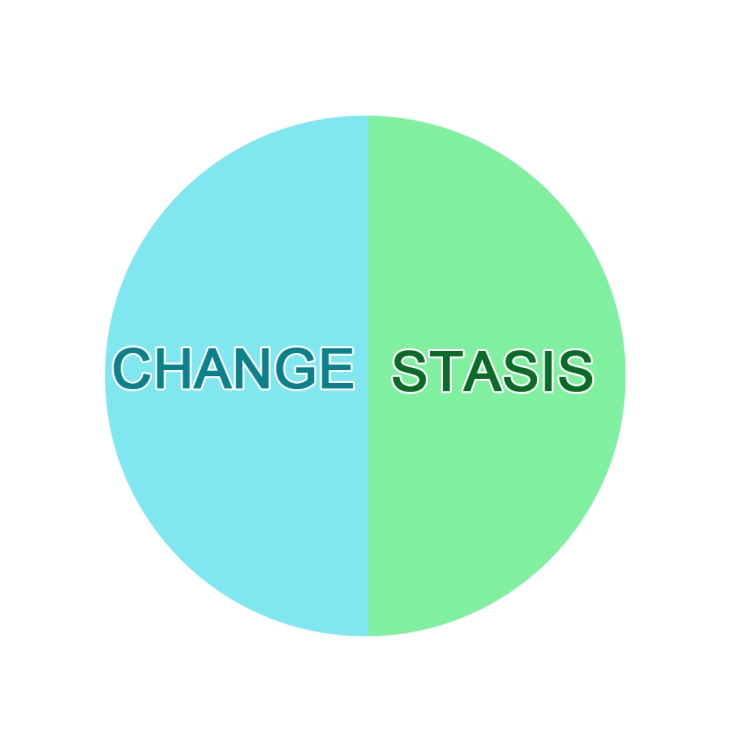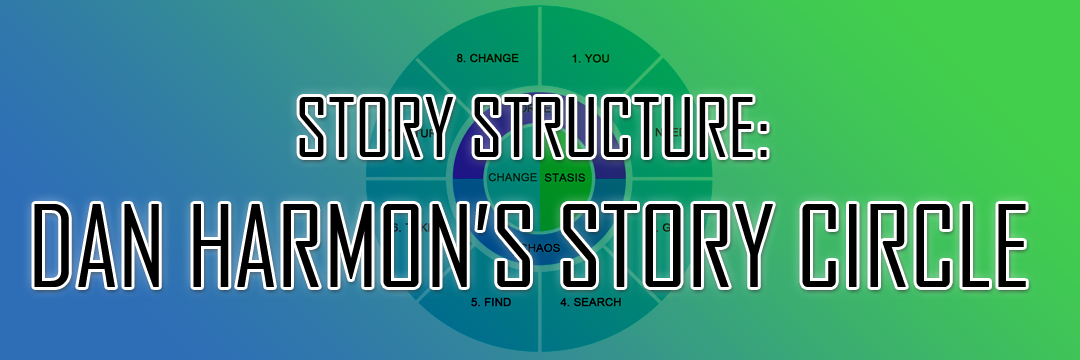A story structure is a map of a story. It’s how the events unfold to make a compelling story for the reader.
We all know what a story is. It has a certain rhythm and when that rhythm is off, we notice, even if we can’t point out exactly what is off. If a story is missing a climax scene in the third act, a reader might not know what’s wrong, but they will notice that something isn’t right.
We know different story structures: The Three-Act Story Structure, Freytag’s Pyramid, The Hero’s Journey, Save The Cat, Six Acts Story Structure, The Snowflake method… and Dan Harmon’s Story Cirlce.
Dan Harmon’s Story Circle

Dan Harmon is an American screenwriter. He’s the creator of the animated comedy Rick & Morty and the sitcom Community.
Harmon’s Story Circle is a simplified version of Joseph Cambell’s The Hero’s Journey. The Story Circle is split into two halves, horizontally and vertically, and consists of 8 steps.
Character’s Internal Change
The character’s internal change is represented with a vertical line down the middle of the circle. Left side represents Change and the right side represents Stasis.

STASIS: The character is ignorant and in denial. He’s reacting.
CHANGE: The character takes action toward his goal. He’s enlightened and out of denial.
Character’s External Change
The character’s external change is represented with a horizontal line across the middle of the circle. The top half represents Order and the lower half represents Chaos.

ORDER: This is the character’s ordinary world, the normal world he’s familiar with. Character is in control.
CHAOS: This is the extraordinary world that’s unfamiliar to the character. The extraordinary world brings unknown to the character and tests him.
8 PARTS OF THE STORY CIRCLE

1. YOU: The character is in a zone of comfort or familiarity.
The character lives in the world he’s always known and is in control of the situation. He lives a relatively normal life. Establish the main character of the story and the world he lives in.
Taken (2008): Bryan Mills is a retired CIA agent. He lives a lonely and boring life.
2. NEED: But he wants something.
Living in his ordinary world, the character desires something or has a goal he wants to achieve. Something is missing in his life; something isn’t quite right. Or something happens that changes the character’s world and sparks a desire. The character wants to achieve this goal so badly that he’ll do anything to achieve it. Introduce the conflict, stakes, and the character’s motivations. This is the reason the story takes place.
Taken (2008): Bryan wants a closer relationship with his daughter and to be more involved in her life.
3. GO: He enters an unfamiliar situation.
To achieve his goal, the character has to enter the extraordinary world he’s unfamiliar with. The character can enter the situation willingly or something happens that pushes him into the extraordinary world. Show the contrast between the ordinary and the extraordinary world. This is what the story is really about.
Taken (2008): Kim, Bryan’s daughter, is kidnapped in Paris.
4. SEARCH: He adapts to the unfamiliar situation.
The character tries to get what he wants. He learns and tries to adapt to the new situation. He’s dealing with the problems the way he always has, but the old way of doing things doesn’t work in the extraordinary world and/or makes things even worse for the character. The character’s life is irrevocably changed, and there’s no going back.
Taken (2008): Bryan uses his skills and knowledge to track down the men that kidnapped Kim. He has to adapt to the new world.
5. FIND: He finds what he wanted.
The character gets what he wanted, but there are other obstacles or he realizes this isn’t really what he wanted. The character changes. A big revelation or a plot twist.
Taken (2008): Bryan finds Kim, but there are more obstacles in the way of him getting to her.
6. TAKE: And pays a heavy price for it.
The character wins, but he pays a price for getting what he wants. He loses something important. His success has unexpected consequences. It looks like there’s no way the character can win. This part includes the climax scene of your story.
Taken (2008): Because Bryan found Kim, her life is now in danger. To save Kim, Bryan has to kill the leader of the organization that bought Kim.
7. RETURN: He returns to the familiar situation.
The character returns to his ordinary world that’s familiar to him.
Taken (2008): Bryan and Kim are back on the US soil and reunited with Kim’s mother.
8. CHANGE: But has changed as a result of his journey.
The journey changed the character, and although he’s back in the ordinary world, his life will never be the same. The character has fundamentally changed; he overcame a fear or a character flaw.
Taken (2008): Bryan returns to his ordinary life, but now he has a good relationship with his daughter.
Conclusion
Dan Harmon’s Story Circle is a great way to plan your story. By figuring out the 8 parts of the Story Circle, you have the foundation for the entire story.
One thing to remember: The eight parts aren’t all the same length. If you’re writing an 80.000 word novel, You might be 5.000 words, while Search might be 20.000 words. Take is also longer and includes the climax scene of your story, while Return and Change are shorter and serve as resolution of your story.
This, like other story structure theories, is just a guide, not a set of rules you need to follow.
Happy writing,
xo Knox


Leave a comment